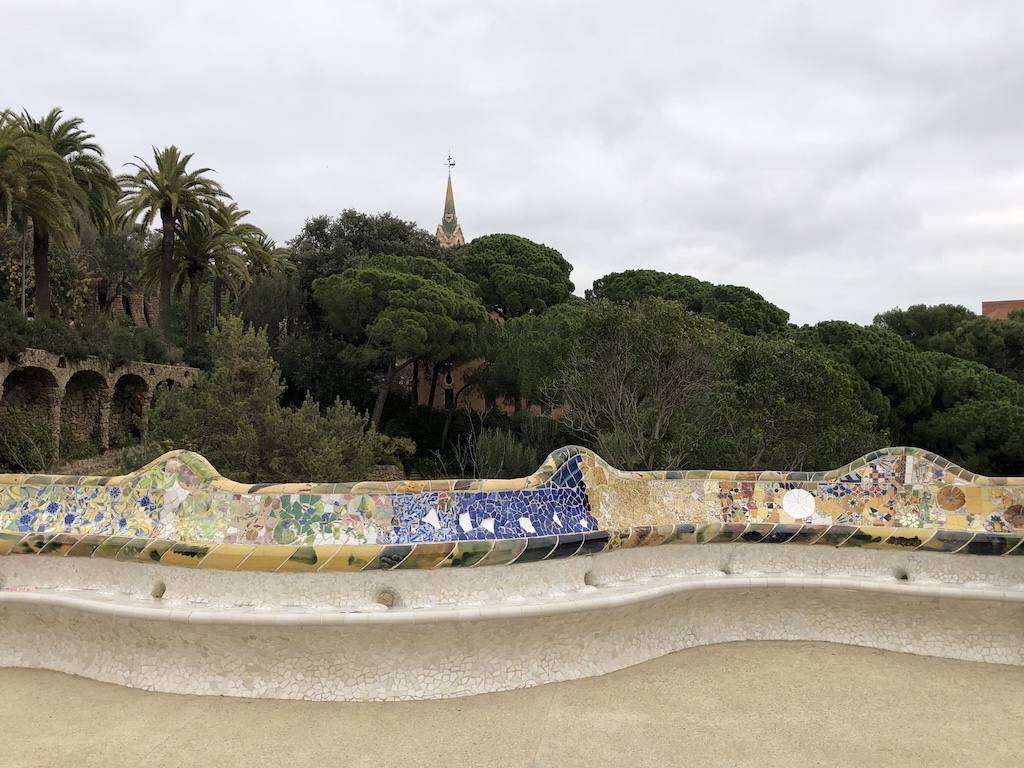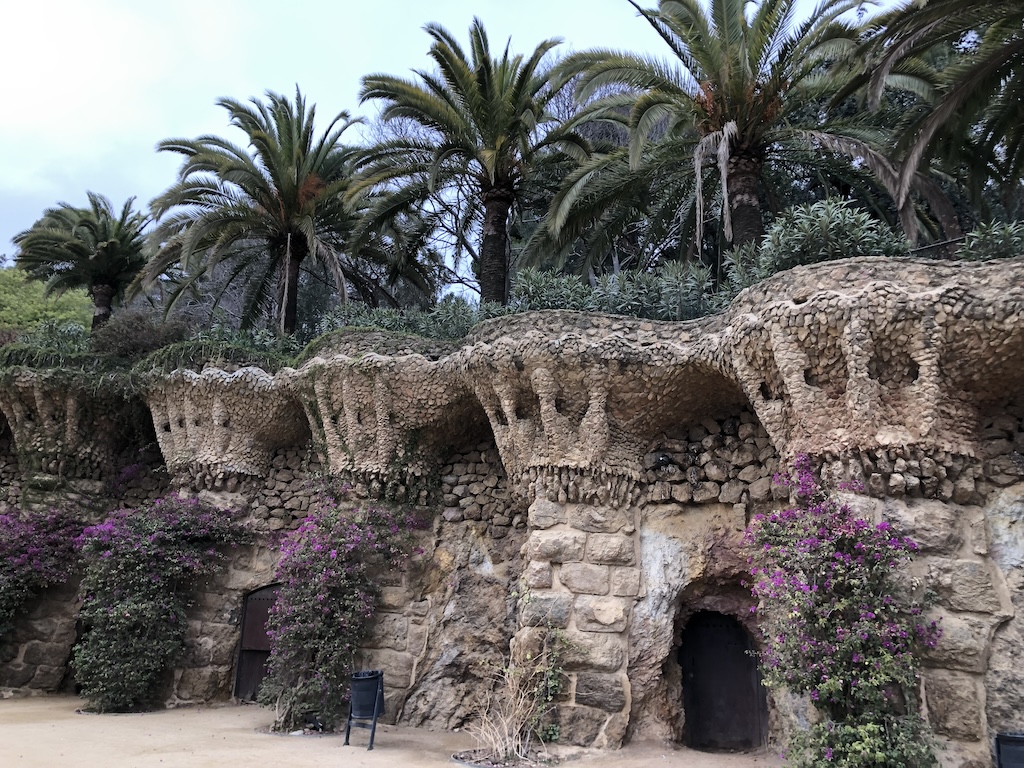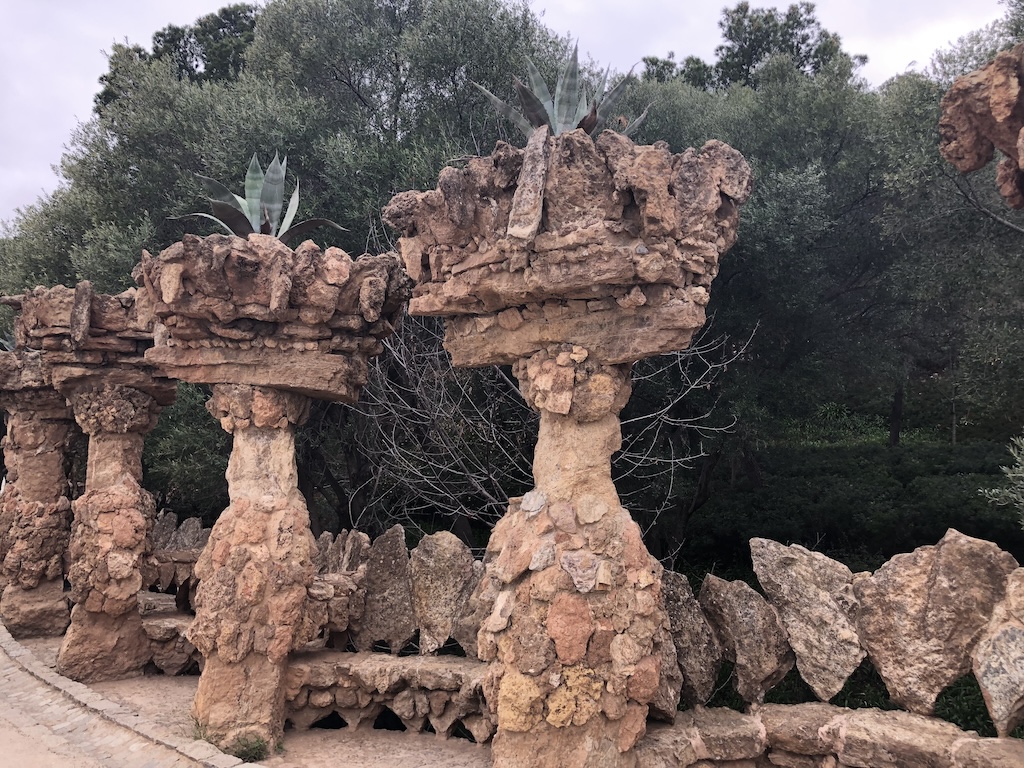In January 2024, when I revisited Barcelona, one of the places I wanted to revisit is Park Güell. The park is one of Barcelona’s great attractions so advanced ticket purchase is recommended. I was lucky to get a ticket the day before my visit and happily spent about four hours at the park.
Park Güell
Park Güell was named after entrepreneur Eusebi Güell. In 1900, Güell entrusted renowned Catalan architect and designer Antoni Gaudí to design Park Güell. The park was built from 1900 to 1914 and was officially opened as a public park in 1926. In 1984, UNESCO declared the park a World Heritage Site under “Works of Antoni Gaudí“.
What I love about Park Güell:
- Beautiful nature, landscape design and art in 12 acres
- Organic shapes (curves), natural materials and pretty mosaics (trencadís)
- Upper and lower levels provide a nice hike and great views of Barcelona
Here are the nine features that I love at Park Güell in no particular order.
Gaudí Museum House

The Dragon Stairway
The steps of the stairway at the park’s main entrance are symmetrically laid out around the sculpture of a salamander. It is a busy spot with visitors posing and taking pictures so I only got one picture of the salamander.

The Hypostyle Hall
The Hypostyle Hall is a covered area with eighty-six columns supporting the upper Nature Square. It is a grand space to enter from the main entrance of Park Güell.


Nature Square and The Serpentine Bench
Nature Square is a large square conceived of as a central space of the estate, in which social events could be held. Unlike the rest of the park, which tends to adapt to the relief of the terrain, this square is partly dug into the mountain and partly held up by the columns of the Hypostyle Hall.
The Serpentine Bench in the square is one of the most immediately recognizable features in the park. It is made of prefabricated pieces of cement and clad with broken tile mosaics (trencadís).


Porter’s Lodge Pavilions

Portico of the Washerwoman
The retaining wall that supports the path that traverses the entire Park Güell horizontally takes the form of a portico with the profile of a great wave held aloft by sloping columns. It is popularly known as the Pòrtic de la Bugadera (Portico of the Washerwoman) because of the sculpture on one of the columns.


Palm Tree Promenade

The Gardens

The Viaducts

Park Güell is an enchanting place. I feel fortunate to have visited this park and enjoy Antoni Gaudí’s unique designs more than once in my lifetime.
Link-Up
I’d love for you to share your week’s highlights and/ or public art from around the world in the Comments or Weekend Coffee Share link-up #156 below.
Copyright © 2024 natalietheexplorer.home.blog – All rights reserved.